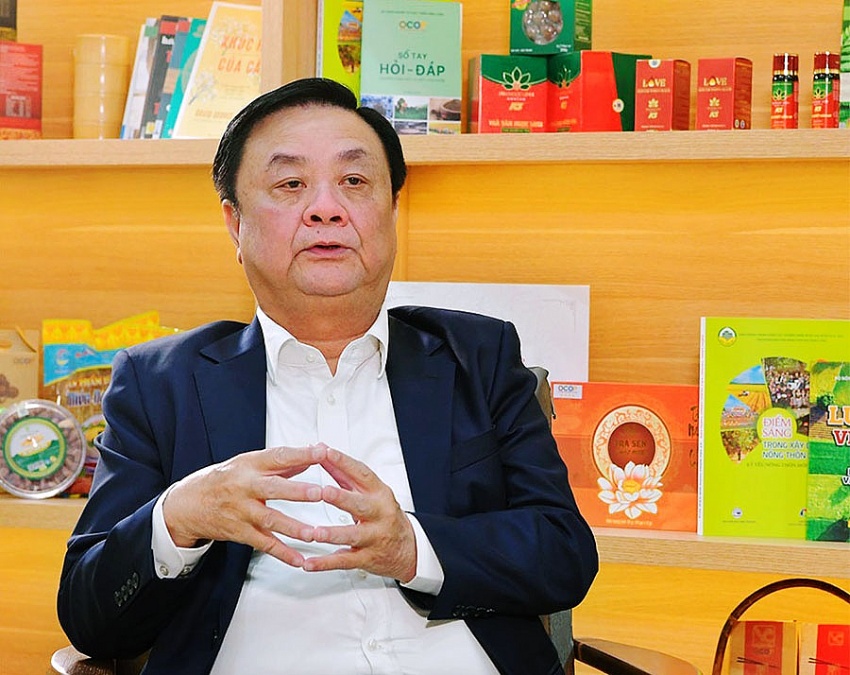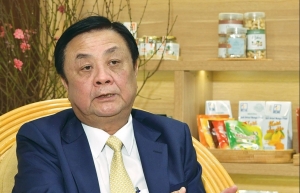Activating Vietnam’s economy via agriculture and rural development
In the past, farmers just tried to raise the quantity of agricultural products as much as possible and simply thought that it would bring higher income. But in reality, focusing on increasing quantity will cause a situation of good seasons and devaluation.
 |
| Le Minh Hoan, minister of Agriculture and Rural Development |
Theoretically, the market is considered an invisible hand. We cannot control it, we can just follow it. The market’s competition is more and more harsh and each agricultural product is suitable for each market. For example, there are fruits that we only consume in the domestic market, and there are products that are strongly exported to China but the US market refuses. Even within the European community of 27 countries, the demands are different.
Thus, the importance is that when we unlock new markets, we must grasp the signals about the demand and the technical requirements of the market to guide farmers. For example, when China agrees to import durian from Vietnam, it must immediately carefully disseminate the technical standard requirements and the quantity for this product for farmers.
This work is extremely important to maintain stable exports, and farmers must comply with the process strictly. Even when unlocking new markets, we must anticipate risks to balance and maintain as many markets as possible. It is very difficult to predict the market, which can open or close for agricultural products at any time. Exporting agricultural products not only depends on the supply and demand factors of the market, but also depends on other factors such as diplomacy.
We activated economic thinking and market thinking by promoting the image of agricultural products, and simultaneously consider it as a way to promote the image of the country. We do not simply consider exporting agricultural products as a normal trade activity, but we consider agricultural products as a national image so that we convey a message that Vietnam is a transparent, responsible, and sustainable agricultural producer.
The country is successful in restructuring industries and connecting producers and farmers with businesses. Businesses have proactively worked with cooperatives to purchase agricultural products, develop raw material areas such as rice and durian, and at the same time create their own raw material areas to ensure the stable source of raw materials and agricultural products, in both quantity and quality.
Over the past year, the Ministry of Agriculture and Rural Development has reorganised production. Our agricultural sector is inherently subject to the curse of being fragmented, small, and spontaneous, so the ministry has reorganised production, and reorganised the markets and links between farmers and businesses to avoid breakage.
The ministry has also activated solutions to replicate green production activities and reduce emissions. If we do not comply, we will be eliminated from the market. Today, consumers around the world not only buy agricultural products, but they also take into account how those products were created. And to enhance the value of that agricultural product, we must know how to tell the story of how that occurs.
For example, when looking at the story of rice production, simply comparing prices between regions is not convincing enough. We have to tell the story about the rice-shrimp production model in the Mekong Delta province of Bac Lieu, which is a smart model for adapting to climate change. If we know how to tell the story of how Vietnamese farmers have moved towards circular, ecological agriculture by combining rice farming with shrimp and fish farming, or growing organic coffee thanks to using bio-composted coffee leaves, the value of Vietnam’s agricultural products will be greatly improved.
The year 2024 will be full of changes and challenges, and it is difficult to predict anything. But the market will always be like that because it is a mix of prices, products, and geopolitical issues. We only know one thing for sure: the market will become more complex and demanding.
Therefore, we must always find new developments, new opportunities, and simultaneously maximise the value of agricultural products. For example, in the past, when we planted rice, we only took the right grain of rice, but today, we know how to utilise rice husks and straw.
We will also sit down with others to come up with new approaches for the agricultural sector in a multi-sector, multi-value direction, and which will help create many jobs for farmers.
 | The pride of agricultural backbone Vietnam’s agriculture has reaped many achievements last year. Minister of Agriculture and Rural Development Le Minh Hoan writes about how the sector will continue sailing forward in the new year. |
What the stars mean:
★ Poor ★ ★ Promising ★★★ Good ★★★★ Very good ★★★★★ Exceptional
Related Contents
Latest News
More News
- Double-digit GDP growth within reach with shift to higher-value expansion (January 06, 2026 | 08:33)
- Takeda Vietnam awarded for ongoing support of Vietnam’s sustainability efforts (December 31, 2025 | 21:00)
- Vietnam's retail market tops $269 billion in 2025 amid e-commerce boom (December 31, 2025 | 19:00)
- Stronger legal framework urged as trade fraud surges online (December 31, 2025 | 18:58)
- FPT exports first chip shipment to Japan (December 31, 2025 | 10:47)
- AkzoNobel rolls out sustainability campaign “It All Adds Up” for the wood sector (December 31, 2025 | 09:23)
- Textile apparel firms deliver robust earnings despite global tariff pressures (December 30, 2025 | 10:09)
- Businesses ramp up production as year-end orders surge (December 30, 2025 | 10:05)
- Vietjet chairwoman awarded Labour Hero title (December 29, 2025 | 13:06)
- How to unlock ESG value through green innovation (December 29, 2025 | 10:03)

 Tag:
Tag:

















 Mobile Version
Mobile Version